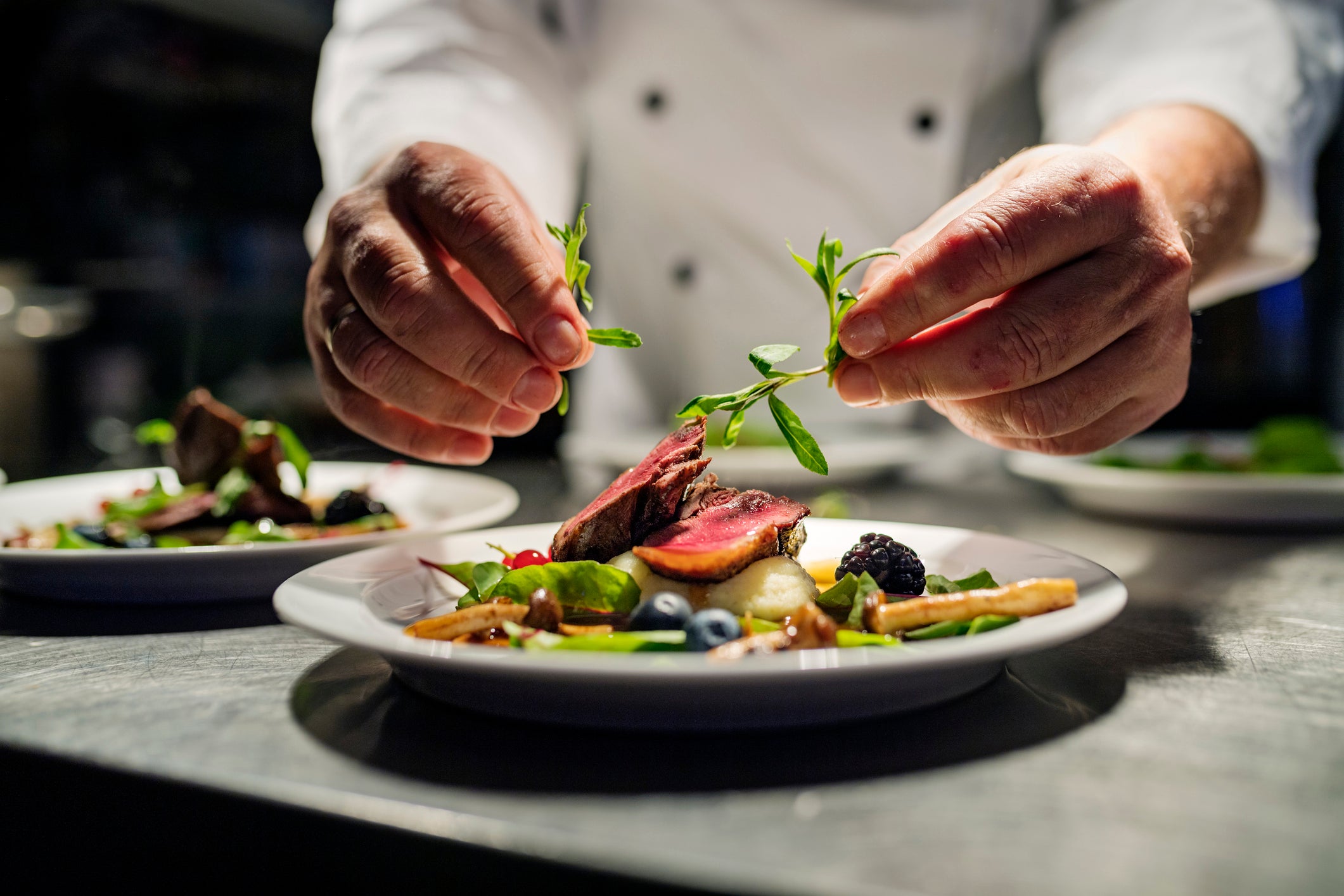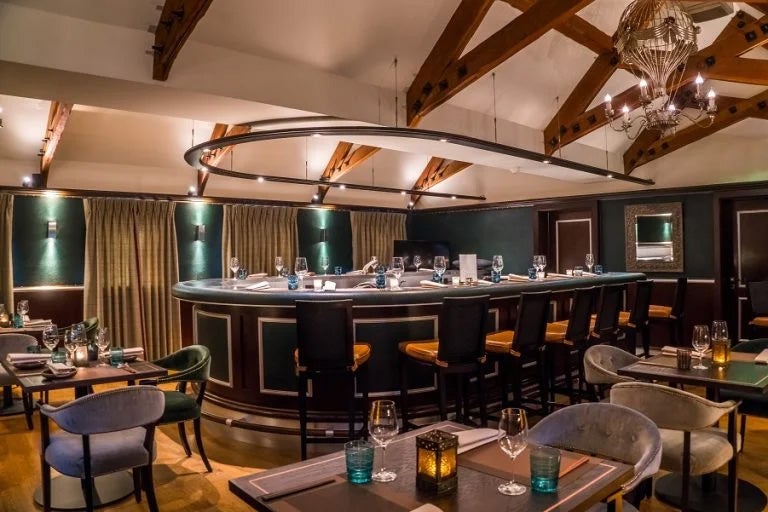The great á la carte comeback: Because sometimes, we just want to choose our dinner
As the cost of living rises and diners seek more flexibility, the UK’s fine dining scene is witnessing a revival of the à la carte menu. Once overshadowed by rigid, chef-driven tasting menus, this return to choice is a welcome change for those who prefer to take control of what they eat, writes Hannah Twiggs


Your support helps us to tell the story
From reproductive rights to climate change to Big Tech, The Independent is on the ground when the story is developing. Whether it's investigating the financials of Elon Musk's pro-Trump PAC or producing our latest documentary, 'The A Word', which shines a light on the American women fighting for reproductive rights, we know how important it is to parse out the facts from the messaging.
At such a critical moment in US history, we need reporters on the ground. Your donation allows us to keep sending journalists to speak to both sides of the story.
The Independent is trusted by Americans across the entire political spectrum. And unlike many other quality news outlets, we choose not to lock Americans out of our reporting and analysis with paywalls. We believe quality journalism should be available to everyone, paid for by those who can afford it.
Your support makes all the difference.Remember when dining out meant choosing your dinner instead of being told what you’d eat? In the overly precious world of fine dining, the tasting menu has long been the ultimate flex – a chef’s way of saying, “Sit down, shut up and let me show you what’s good”. And we obeyed, surrendering our palates and wallets to whatever multi-course odyssey the kitchen had in store.
But now, some of the UK’s top restaurants are offering a lifeline to those of us who occasionally want to choose our own dinner. Enter the return of the á la carte menu.
You might be wondering why this matters. After all, wasn’t choice always the point of eating out? Yes, but somewhere along the way, it became fashionable to deny diners of that very choice. Tasting menus turned chefs into culinary dictators, herding us through endless courses of mousses, foams and jellies. It can be impressive, sure, but also exhausting. The thrill of discovering each new dish is often overshadowed by the creeping realisation that you’re in for the long haul – whether you like it or not.
So why the shift back to á la carte? The economy, for starters (pun intended). While the cost of living continues to burn a hole in our pockets, not everyone can justify dropping a small fortune on an edible art installation. Á la carte is a means by which restaurants can widen their appeal without diluting their brand. Like Gucci selling keychains.
Take Whatley Manor’s The Dining Room, for example, where you can now opt for a £120 three-course meal rather than commit to the full £175 tasting menu. It’s a small mercy for those who want to experience the restaurant without having to remortgage their house or spend an entire evening staring at tiny, artfully arranged morsels. Furna in Brighton and The Pompadour in Edinburgh have also jumped on the á la carte bandwagon, offering flexibility without sacrificing the essence of fine dining. Even in Glasgow, The Gannet has made a similar move, recognising that not everyone wants to be held hostage by a tasting menu.
Don’t be fooled, though: this is á la carte with a twist. Some of these menus are really just tasting menus in disguise, forcing you to order three courses at a fixed price. The freedom to pick is there, but it’s a bit like being handed a “choose your own adventure” book where every choice ends in the same place. Still, it’s a step in the right direction – a nod to the fact that, sometimes, the best dining experience is the one where you get exactly what you want.
While we’re on the subject of choice, it’s worth noting that some restaurants are finding clever ways to offer the best of both worlds. Stephen Harris’s Michelin-starred The Sportsman in Kent offers a five-course tasting menu that’s very much in the á la carte vein, with diners able to choose between four dishes for every course and five for dessert. It’s the kind of flexibility that makes you wonder why more places aren’t doing the same. Then there’s Claude Bosi at Brooklands, where the á la carte menu requires diners to choose three dishes for a set price. With a large selection of dishes to choose from, it still feels like you’re in control of your dining destiny.

Even midweek menus are getting in on the action. The Sportsman’s three-course midweek menu, for instance, offers a choice of two or three dishes for each course at a set price. It’s a smart way to attract diners who might be hesitant to commit to a full tasting menu but still want a taste of what the restaurant has to offer.
It’s not just the economy, though that’s a significant part of the equation. The tasting menu, once the playground for culinary creativity, has started to feel more like a culinary boot camp. There’s no room for deviation, no space for spontaneity. And while some of us might enjoy the thrill of giving up control (a culinary version of bungee jumping, if you will), others are starting to find it a bit, well, oppressive.
It’s about eating what you want when you want it, without having to sit through 14 courses to get there. And if that means opting for a simple steak and chips over a dehydrated duck yolk with molecular mist, so be it
The modern diner is savvy, informed and often in a hurry. They’ve watched the Netflix documentaries, they’ve seen the Instagram reels, and they know that behind every foam and smear there’s a chef with a vision. But they’ve also got lives to live. The idea of spending three hours in a chair, waiting to see what the next dish will be, doesn’t always appeal. Especially when you could be at home, in your pyjamas, bingeing the latest series of MasterChef.
And it’s not just about time, either; it’s about appetite, too. Sometimes, you’re simply not in the mood for a gastronomic marathon. You don’t want to be challenged or surprised – you just want to eat. The return of the á la carte menu acknowledges this basic, often overlooked truth.
It’s a welcome change; a reminder that, at its best, dining out is about pleasure, not penance. It’s about eating what you want when you want it, without having to sit through 14 courses to get there. And if that means opting for a simple steak and chips over a dehydrated duck yolk with molecular mist, so be it.
So is this the end of the tasting menu? Hardly. There will always be chefs who want to control every bite, and there will always be diners who relish the surprise. It will always have its place, especially in those temples of gastronomy where the experience is as much about storytelling as it is about eating. For those who seek that kind of culinary pilgrimage, the tasting menu will always be the gold standard. There’s something exciting about putting yourself in the hands of a master chef and saying: “Surprise me.”
But for everyone else, the return of á la carte is a welcome relief. It’s dining on your own terms, with just enough wiggle room to keep things interesting. And honestly, isn’t that what eating out should be all about?




Join our commenting forum
Join thought-provoking conversations, follow other Independent readers and see their replies
Comments